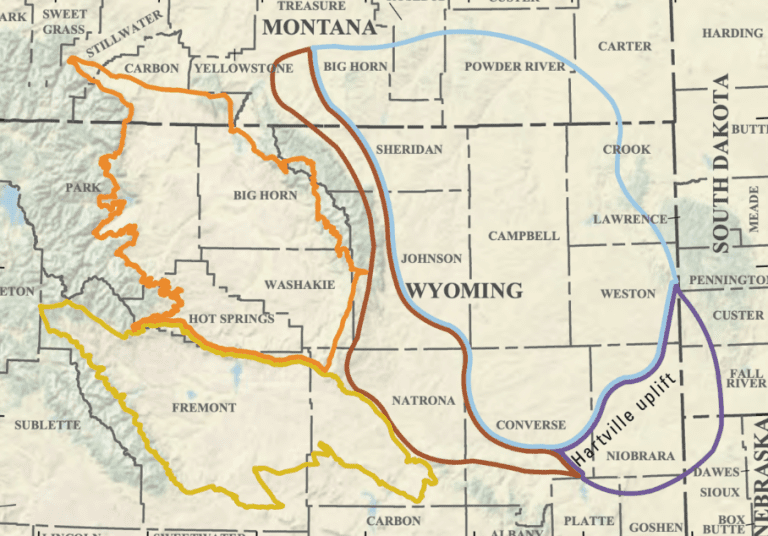Welcome to Geotech!

AGU25 Annual Meeting: Geotech’s Geophysical Tools Fit Global Earth Science Goals
TIPS:The AGU 2025 Fall Meeting, held Dec 9-13 in San Francisco, is the world’s top earth science event, and Geotech’s tools align with its key trends. Geotech’s proton magnetometer stands out for high-precision geomagnetic mapping—this reliable proton magnetometer also works in harsh polar environments. Additionally, Geotech’s Electrical Resistivity Tomography (ERT) system excels at environmental monitoring, and this versatile ERT tool further integrates IP modules to boost groundwater contamination detection accuracy, fully matching AGU 2025’s research focus.

Ⅰ. AGU 2025 Fall Meeting Core Overview

- Basic Event Info
Hosted by the American Geophysical Union (AGU), the 2025 AGU Fall Meeting runs December 9-13, 2025 in San Francisco, USA. It is the world’s largest earth and space science conference, drawing 28,000+ professionals yearly.
- Host Organization Background
AGU has advanced earth science research for 100+ years. It publishes 22 top journals and focuses on “Understanding and Sustaining Our Planet” through global collaboration.
- Key Participating Groups
Attendees include:
- Earth science researchers (geophysics, climatology, geology)
- Environmental survey agencies and geological institutions
- Geophysical equipment manufacturers (ERT, GPR, magnetometer makers)
- Space and atmospheric science teams
Ⅱ. AGU 2025 Geophysics-Related Highlights

- Earth Observation Tech Zone
The “Global Geophysical Monitoring” zone showcases tools for planetary observation. It features proton magnetometers for geomagnetic field mapping and ERT systems for subsurface carbon storage monitoring.
- Environmental Geophysics Forum
Over 100 sessions cover environmental exploration. Topics include Ground Penetrating Radar (GPR) for soil moisture mapping and Induced Polarization (IP) for groundwater contamination detection.
- Deep Earth & Seismic Exploration Track
A dedicated track focuses on seismic nodal advances. It explores deep earth structure research (1,000m+ depth) and low-power nodal systems for long-term seismic monitoring.
- Climate-Resilient Geotech Showcase
Exhibits highlight tools for climate impact studies. This includes DC Resistivity Sounding equipment for permafrost thaw monitoring and solar-powered magnetometers for polar research.
| Exhibition Zone | Core Technologies | Proportion |
| Global Geophysical Monitoring | Proton Magnetometer, ERT | 35% |
| Environmental Exploration | GPR, IP, DC Resistivity Sounding | 30% |
| Deep Earth Research | Seismic Nodal, Deep-Sensing Tools | 20% |
| Climate Impact Studies | Polar-Ready Geophysical Equipment | 15% |
Ⅲ. 2025 Earth Science Trends from AGU
- High-Precision Geomagnetic Observation
Climate studies need accurate geomagnetic data. Proton magnetometers with ±0.1nT resolution are now standard for polar and oceanic geomagnetic surveys (AGU 2025 trend report).
- Multi-Method Environmental Monitoring
Projects require combined tools for comprehensive data. Pairing ERT with IP improves groundwater contamination mapping accuracy by 40% (2025 AGU survey).
- Shallow-to-Deep Earth Integration
Research spans both shallow (0-200m) and deep (1,000m+) earth layers. GPR handles shallow soil/groundwater studies, while seismic nodal systems explore deep tectonic structures.
- Portable Tools for Remote Research
Remote sites (e.g., deserts, polar regions) need lightweight equipment. Handheld Vertical electrical sounding (VES) tools and compact magnetometers reduce field team workload by 25%.
Ⅳ. Geotech’s Products Fit AGU 2025 Trends

- Proton Magnetometer Advantages
Geotech’s proton magnetometer aligns with AGU’s geomagnetic observation focus:
- ±0.1nT resolution for precise polar geomagnetic mapping
- Low-power design (runs 60+ days on batteries) for long-term monitoring
- Waterproof (IP68) and freeze-resistant (-40℃) for harsh environments
This matches the “Global Geophysical Monitoring” zone’s demand for accuracy.
- ERT & IP Integration Solutions
Geotech’s Electrical Resistivity Tomography (ERT) systems meet environmental monitoring needs:
- 200+ channels for large-area contamination mapping
- Integrated Induced Polarization (IP) modules to identify pollutant types
- Real-time data sharing with AGU-compatible research software
These fit the “Environmental Exploration” zone’s multi-method trend.
- GPR for Shallow Earth Studies
Geotech’s Ground Penetrating Radar (GPR) supports shallow research:
- High-frequency antennas (1.0-3.0 GHz) for 0-200m soil/groundwater mapping
- AI software that auto-analyzes soil moisture and layer structure
- Lightweight (2.5kg) for easy transport in remote areas
It complements AGU’s shallow-to-deep earth integration trend.
- Seismic Nodal & Climate-Ready Tools
Geotech’s seismic nodal equipment meets deep earth research needs:
- 1,000m+ depth detection for tectonic structure studies
- Solar charging option for long-term polar monitoring
- Wireless data transfer for real-time seismic analysis
Its climate-ready design also fits the “Climate Impact Studies” track.
| AGU 2025 Trend | Geotech Product | Key Matching Feature |
| High-Precision Geomagnetic Observation | Proton Magnetometer | ±0.1nT Resolution |
| ERT-IP Integration | ERT + IP Bundle | Integrated Modules |
| Shallow Earth Studies | GPR System | 1.0-3.0 GHz Antennas |
| Deep Earth Research | Seismic Nodal | 1,000m+ Depth Detection |
Ⅴ. Call for Earth Science Partners to Join AGU 2025
AGU 2025 is critical for earth science professionals. It offers:
- Demos of the latest proton magnetometer and ERT tech for geomagnetic studies
- Networking with 5,000+ research institutions and equipment makers
- Sessions on GPR and seismic nodal integration for shallow-deep earth research
Environmental agencies, university research teams, and geophysical service providers should attend. They can learn how Geotech’s tools solve real earth science challenges like groundwater monitoring and polar geomagnetic mapping.
Ⅵ. Conclusion

AGU 2025 Fall Meeting will shape the future of earth science. Trends like high-precision geomagnetic observation, multi-method environmental monitoring, and shallow-deep earth integration are key. Geotech’s products—from proton magnetometers and ERT systems to GPR and seismic nodal tools—are built to meet these earth science-specific needs. By following AGU’s lead, Geotech continues to support the global effort to understand and sustain our planet. All earth science partners are encouraged to engage with AGU 2025 and explore how innovative geophysical tools drive better earth science research results.
Reference
- WIKI:https://en.wikipedia.org/wiki/Electrical_resistivity_tomography
- Society of Exploration Geophysicists (SEG) https://seg.org/
- Society of Environmental and Engineering Geophysicists (EEGS) https://www.eegs.org/
- Geology and Equipment Branch of China Mining Association http://www.chinamining.org.cn/
- International Union of Geological Sciences (IUGS) http://www.iugs.org/
- European Geological Survey Union (Eurogeosurveys) https://www.eurogeosurveys.org/
-1.png)






